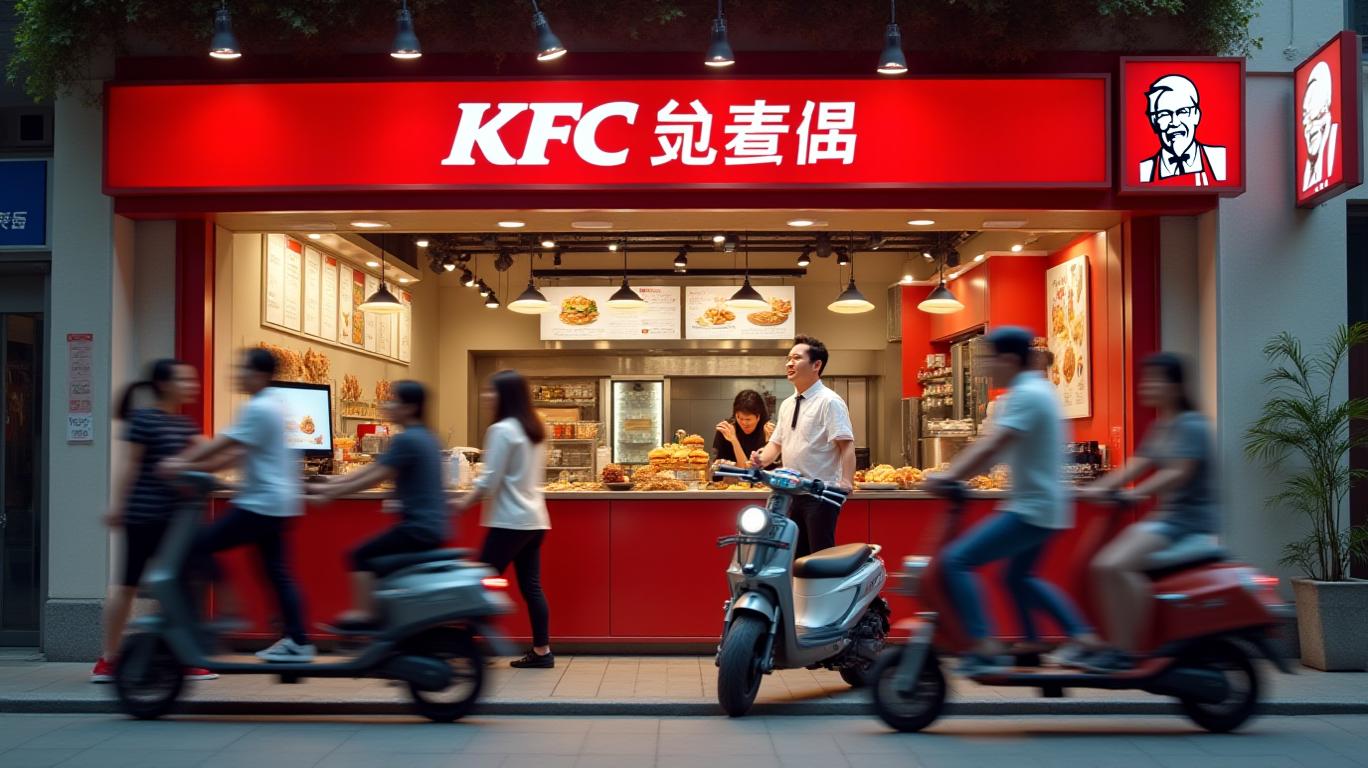Yum China’s Q1 2025 Results: A Resilient Foundation in a Challenging Landscape
In an era of economic uncertainty, Yum China Holdings Inc. (YUMC) has delivered a Q1 2025 earnings report that underscores its ability to navigate choppy waters with discipline. While same-store sales growth flatlined at 100% of prior-year levels—the first stabilization since early 2024—the company’s broader financial performance tells a story of operational resilience, margin optimization, and strategic focus. Let’s dissect the numbers to uncover the drivers and implications for investors.

The Numbers: Stabilizing Sales, Expanding Margins
The headline figures reveal a mixed but ultimately positive picture. System sales grew 2% YoY, albeit at a slower pace than previous quarters. Same-store sales stagnated at flat growth, reflecting both a saturated market and cautious consumer spending. However, the critical bright spot is the 6% YoY rise in transactions, extending a nine-quarter streak of growth. This suggests Yum China’s focus on driving foot traffic—via promotions, membership programs, and digital engagement—is paying off, even as average ticket sizes remain constrained.
Profitability, however, is where the company truly shone. Operating profit surged 7% to $399 million, with the operating margin expanding by 80 basis points to 13.4%. Restaurant margins improved even more dramatically, climbing 100 basis points to 18.6%. This margin expansion is a testament to cost discipline, including better supply chain management, renegotiated supplier contracts, and the scaling of its delivery and digital sales infrastructure.
The company’s two main brands, KFC and Pizza Hut, both contributed to this success. KFC’s operating profit rose 4%, while Pizza Hut’s jumped 27% on a 190 basis-point margin improvement—a sign that its turnaround strategy, focused on simplified menus and localized offerings, is gaining traction.
Digital Dominance and the Membership Economy
Yum China’s reliance on digital sales and loyalty programs continues to be a key differentiator. Digital transactions now account for 93% of total sales ($2.6 billion), up 12% YoY, driven by its 540 million-strong membership base. Delivery sales, a critical lifeline for urban customers, grew 13% YoY to 42% of company sales—a figure that highlights the importance of its partnerships with platforms like Alibaba’s Ele.me.
This digital flywheel is more than a convenience—it’s a data-driven engine for retention. Members spend 2.5x more than non-members, and the company’s ability to personalize promotions and track preferences gives it a competitive edge in a crowded fast-food market.
The Elephant in the Room: Same-Store Sales Stagnation
While the stabilization of same-store sales at flat growth is a relief after a year of declines, it also signals underlying challenges. Rising labor and rent costs in urban centers, coupled with a slowdown in discretionary spending, are squeezing Yum China’s ability to grow ticket sizes. Management acknowledged that “prior-year comparisons are tough” but emphasized that transaction growth remains the priority.
Investors should note that the company’s 2025 goal of opening 1,600–1,800 net new restaurants—up from 1,700 in 2024—depends on maintaining unit-level economics. A would reveal whether this expansion is sustainable.
Balance Sheet Strength and Shareholder Returns
Yum China’s financial flexibility remains a strength. The company reaffirmed its $3 billion shareholder return commitment through 2026, having returned $262 million in Q1 via dividends and buybacks. A
Conclusion: A Company Built for Volatility
Yum China’s Q1 results are a reminder that steady execution in turbulent times is a rare—and valuable—skill. While same-store sales stagnation is a red flag, the company’s margin gains, transaction momentum, and digital prowess provide a sturdy foundation for growth. With delivery and membership metrics at record highs, and a pipeline of new stores in lower-tier cities, Yum China is positioning itself to capitalize on China’s rebound in consumer confidence.
The numbers back this optimism: a 7% rise in operating profit, 8% EPS growth to $0.77, and a 100 basis-point restaurant margin expansion since 2024 all suggest management is ahead of the curve. For investors, the key question is whether these trends can outpace macroeconomic headwinds. If Yum China continues to optimize costs, deepen its digital ecosystem, and expand into underserved markets, its 2025 targets—and its $3 billion shareholder promise—are within reach.
In an industry where volatility is the norm, Yum China’s Q1 report is a masterclass in resilience.


_442a2dcc1749832873286.jpeg)
_e68fac6d1749831664430.jpeg)






